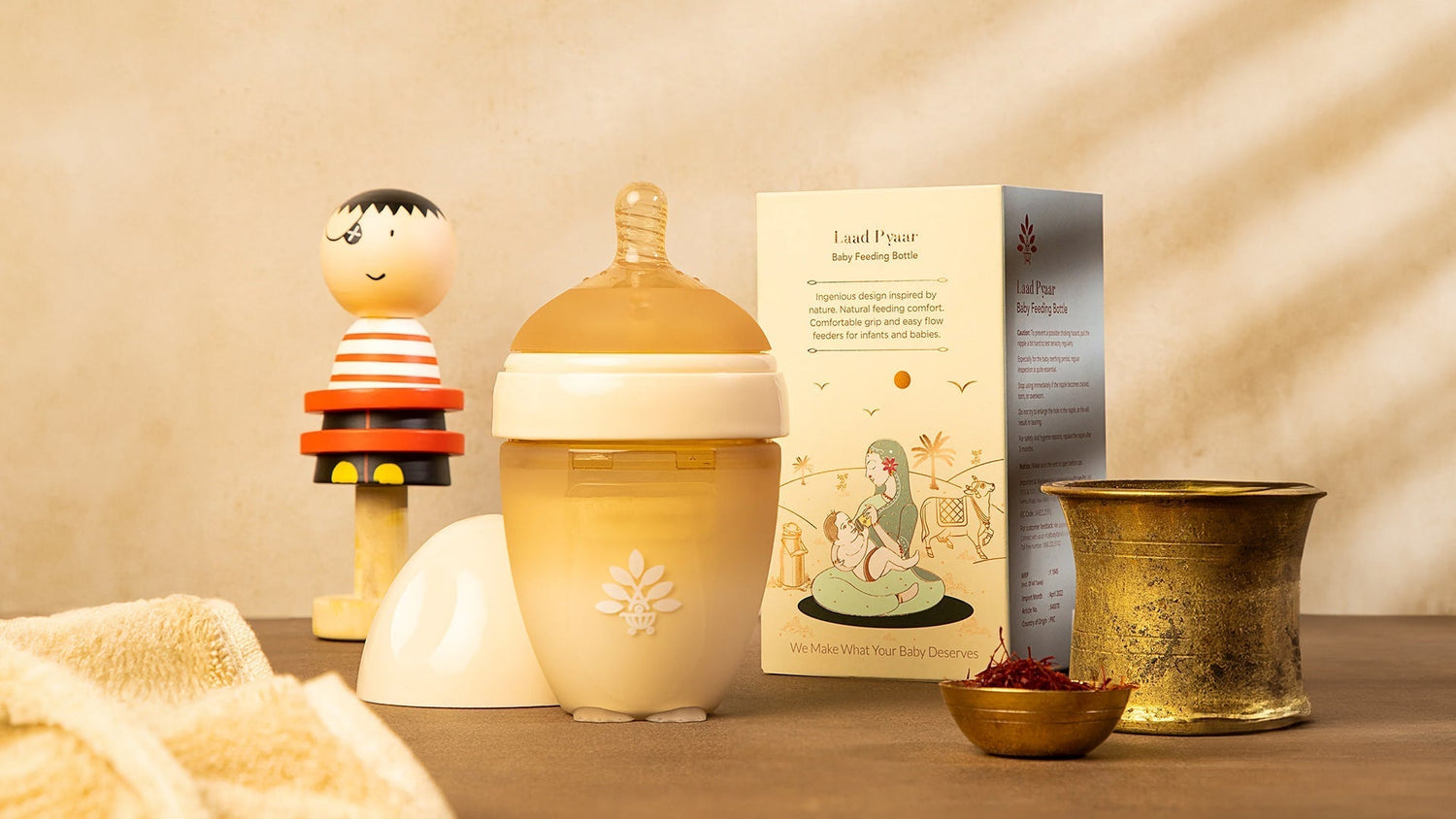
5 Must-Know Benefits Of Using A Baby Carrier


Comprehensive Baby Feeding Chart for 2-Year-Olds

How to Avoid Nipple Confusion While Breastfeeding and Bot...

How to Prepare for Baby's First Cold and Flu Season: A Co...

Is Formula Feeding Safe for Your Little One?

10 Essential Ayurvedic Products For Babies

5 Winter Foods That You Should Include In Your Lil One's ...

All You Need To Know About Breastfeeding

07 Winter Tips for Your Baby's Delicate Skin

What Causes Colic? A Simple Guide for Parents

9 Easy Tips to Encourage Self-Feeding for Babies

A Parent's Guide to Organic Baby Clothes: What You Need t...

How to clean/wash baby feeding bottle?

5 Cute Must-Have Summer Dresses for Baby Girl

Nourishing the New Mother: Ayurvedic Postnatal Care Pract...

Nervous About weaning Your Baby? Here Is What You Need To...

Feeding Your Infant: Common Challenges and How to Overcom...

How to Safely Heat Milk for Your Baby: Tips and Techniques

Burping Baby 101: Why It Matters and How to Do It Right!

Comprehensive Baby Feeding Chart: Ages 0-12 Months

A Beginner's Guide to Baby-Led Weaning

The Benefits Of Baby Feeding Bottle: A Parent’s Guide

How to Create the Perfect Feeding Schedule for Your Newborn

The Ultimate Baby Feeding Checklist: From Newborns to Tod...

Purees vs. Finger Foods: Which Is Best for Your Baby?

Homemade Baby Food: 2 Simple Recipes for Healthy Meals
In infants, colic is characterised by excessive crying and discomfort, often due to gastrointestinal discomfort. While the exact cause of colic remains a mystery, it's believed that swallowed air during feeding, leading to gas and abdominal pain, plays a significant role. Colic can be stressful for both babies and parents, prompting the search for effective solutions to soothe these tiny tummies.
Related Read - What Causes Colic? A Simple Guide for Parents
Anti-colic feeding bottles are ingeniously designed to reduce the amount of air a baby ingests during bottle-feeding. They typically feature special vents, valves, or straw-like systems that allow air to bypass the milk or formula, preventing it from being swallowed by the baby. This innovative design mimics more closely the natural process of breastfeeding, where the baby controls the flow and intake of milk, reducing the chances of air ingestion.
Colic can be a distressing condition for babies and parents alike, characterized by prolonged periods of crying and apparent abdominal discomfort. Anti-colic bottles are specifically designed to minimize the amount of air a baby swallows while feeding, which is a common cause of colic. These bottles often feature unique vents, valves, or tube systems that allow air to escape from the bottle before it can be ingested by the baby, leading to a happier, more comfortable feeding experience.
By reducing the amount of air swallowed during feeding, anti-colic bottles help promote more efficient digestion. This is crucial in the early stages of a baby's life when its digestive system is still developing. Efficient digestion means less spitting up, gas, and discomfort for your little one, contributing to a smoother, more pleasant feeding routine.
Many anti-colic bottles are designed with nipples that mimic the shape and feel of the breast, encouraging a natural latch. This feature particularly benefits breastfeeding moms who alternate between breast and bottle feeding. A natural latch helps in making the transition between the two smoothers, reducing nipple confusion and making it easier for the baby to feed comfortably regardless of the method.
Anti-colic bottles can also promote healthy feeding habits by allowing babies to control the flow of milk based on their sucking strength. This closely replicates the natural flow of breast milk, which can prevent overfeeding and reduce the likelihood of feeding-related issues. When babies feed at their own pace, they learn to listen to their bodies' hunger and fullness cues, fostering a healthy relationship with feeding from an early age.
To be effective, anti-colic baby feeding bottles come with a somewhat more complex design than standard bottles, featuring parts like vents or tubes. However, manufacturers are keenly aware of the need for easy cleaning and often design these bottles to be easily disassembled and cleaned, ensuring that hygiene is not compromised. Many anti-colic bottles are also made to be dishwasher safe, adding an extra layer of convenience for busy parents.
When choosing an anti-colic bottle for your baby, several factors merit careful consideration to ensure you're selecting the best option for your infant's needs. First and foremost, material safety is paramount; look for bottles made from BPA-free plastic, glass, or silicone to ensure that your baby is not exposed to harmful chemicals during feeding. Ease of cleaning is another crucial aspect, as anti-colic bottles often come with extra parts—choose a design that can be easily disassembled and cleaned to maintain hygiene and prevent the buildup of milk residues.
Related Read - How to clean/wash baby feeding bottle?
The nipple design plays a significant role in how well your baby will adapt to the bottle; look for nipples that mimic the natural shape of the breast to facilitate a smooth transition between breast and bottle feeding and reduce nipple confusion. Additionally, consider the ventilation system of the bottle, which is the core feature that helps prevent air ingestion; opt for a system that effectively channels air away from the milk to minimize gas and colic symptoms. Finally, take into account the size and flow rate of the bottle to match your baby's growing appetite and feeding rhythm. By keeping these considerations in mind, you can choose an anti-colic bottle that offers comfort, convenience, and a peaceful feeding experience for both you and your baby.
Anti-colic feeding bottles offer a range of benefits that not only ensure a more comfortable and enjoyable feeding experience for your baby but also provide peace of mind and convenience for you as a parent. From reducing colic symptoms and promoting proper digestion to encouraging natural latching and supporting healthy feeding habits, these bottles are designed with both the baby's and parent's best interests in mind.

